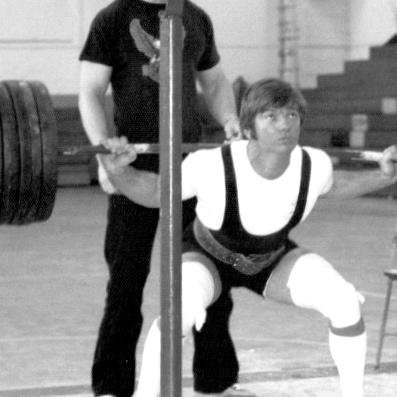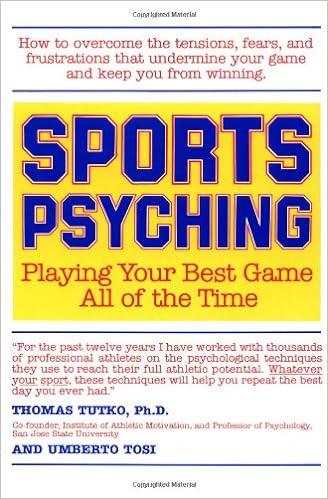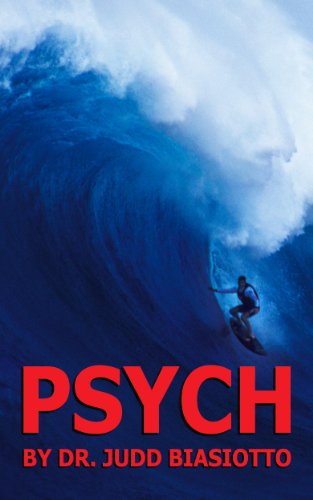Just Close Ypu Eyes
Closing your eyes works, as well. Malou mentioned performing movement that way in the article.
I automatically close my eyes when I life without thinking about it. I always have.
Initially, I began with visualation techniques with...
Dr Judd Biasiotto. Psychologist
When a man is determined to improve his performance on a lift, he will do whatever he can to break that plateau. Dr. Judd Biasiotto is one of those men, and his story and the methods he used to break a world record will inspire you.
www.strongfirst.com
Biasiotto was one of the great 132 lb Powerlifter of his era.
Biasiotto wrote a series of book on Visualization Training as a means of increasing and individuals lift.
I personally purchased a few book from him and he was nice enough go over information on it on the phone.
Dr Craig Marker did a nice interview with him a while back.
However, Visualization (seeing the lifts) in my head wasn't easy for me.
As I found out, individual learn in different ways.
This is a good article that breaks it down.
Cueing Athletes and Clients: Work With Them, Not Against Them
Cueing Athletes and Clients: Work With Them, Not Against Them
Identifying Learning Styles
The first step in this process is to identify a person’s learning style. ...
Ask the person how they learn best.
Visual Learners
Visual learners learn best through sight and spatial relationships.
They benefit from viewing recordings of themselves and comparing and contrasting good and bad repetitions.
Auditory Learners
Give them instructions and watch them excel. ... Auditory learners are like sponges. They soak up pretty much everything that is said, which is cool.
They remember the entire conversation, which means that their brain ends up clouded when it comes time to perform. This is where your value as a coach comes in. After the conversation is over,
make sure you help them boil it down to one or two bullet points.
Whatever these actionable items are, you need to
turn them into internal or external cues, whichever works best for the client.
Read/Write Learners
For your read/write learners, make sure t
hey accurately record any cues, internal or external, that were utilized during a training session. ...
Here is the trick that takes it to the next level: they have to read it.
Kinesthetic Learners
Lastly are the
kinesthetic learners who learn by doing through touch and feel. These learners are focused on how a movement feels and can utilize internal and external cues because they are in touch with their bodies. Kinesthetic learners respond well to tactical feedback or being put into positions.'
Blindfold Training/Closing Your Eyes
This is Kinesthetic Learning.
This is primarily how I learn a movement by closing my eyes.
Let's take my Deadlift. I know by the feel of it, when I am performing it correctly or incorrectly.
When I am performing it correctly, it feel like the bar is on rails and I am guding it up.
Some of the other methods can assist in my learning, as well. However, Kinesthetically is the most effective for me.
With said, most individuals learning predominately falls into one category.
Neuro-linguistic programming (NLP)
One of the fundamentals of this is to speak to someone in a way/language they can relate to and understand; connecting with the right verbage.
A simple cue that works when talking to them is where they are looking when you are speaking.
1) Looking Up
Individuals who do this are primarily visual.
A question to them would be, "How does that
look to you"?
2) Netural Head Position
These individual are primarily auditory.
A question to them would be, "How does that
sound to you"?
3) Looking Down
Individual who look down tend to be kinesthetic.
A question to them would be, "How does that
feel to you"?
Performing A Movement Incorrectly
As the Cueoing article stated,
"Kinesthetic learners focus on feel, which means if they have been doing something wrong for years, that feels right to them."
Getting individual to correct their techinque is a challange.
When learning the right technique, their lifts are going to initally decrease. It is part of the learning process.
I make an effort to reinforce that learning the right technique amount to taking one step backward to take two steps forward.
In working with them, I get the same complaint about performing the movement correctly.
They state that the new technique doesn't feel right.
My reply is,
"Keep doing it until it does feel right".
Summary
Blindfold Training/Closing Your Eyes may work for improving a movement.
As the Cueing Athelte article states, determine what Learning Category is the most effective for you.



